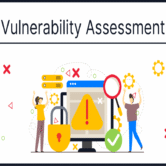
Explain the considerations for designing temporary ID cards.
INTRODUCTION
Temporary ID cards play a crucial role in managing short-term personnel such as visitors, contractors, interns, or new hires during onboarding. Unlike permanent IDs, these cards are issued for limited durations but must still uphold the organization’s standards for security, identification, and branding. Designing temporary ID cards requires a strategic balance between functionality, clarity, and cost-effectiveness, while ensuring they are distinct from standard employee IDs. Below are the key considerations for designing effective temporary ID cards.
1. CLEAR VISUAL DIFFERENTIATION
Temporary ID cards must look noticeably different from permanent staff cards. This can be achieved by:
- Using a different color scheme (e.g., orange or grey)
- Displaying “TEMPORARY” or “VISITOR” in bold text
- Changing the card orientation or layout style
This visual cue helps security personnel and staff quickly identify temporary status.
2. INCLUDE EXPIRATION DETAILS
Always print the validity period directly on the card (e.g., “Valid Until: 09 June 2025”) to limit unauthorized use. For daily visitors, cards can include the issue date and automatically expire by end of day.
3. MINIMAL YET ESSENTIAL INFORMATION
Avoid cluttering the card with unnecessary data. Only include key elements such as:
- Full name
- Visitor/contractor designation
- Company or contact person (if external)
- Issue and expiry date
- Badge number or barcode for tracking
This maintains clarity while protecting sensitive data.
4. USE NON-DURABLE OR ECONOMICAL MATERIALS
Since these cards are short-term, they can be made from paper or thin plastic with lamination, rather than high-cost PVC or smart chip formats. This reduces printing costs and waste, especially in high-traffic environments.
5. INCORPORATE LIMITED ACCESS TECHNOLOGY
If the temporary card grants physical access, ensure it is encoded with restricted access rights. For example, visitors might only access meeting rooms or reception areas. Use time-limited barcodes, RFID tags, or QR codes to control entry and enhance traceability.
6. ASSIGN TEMPORARY HOLDERS OR ACCESSORIES
To prevent confusion or reuse, issue temporary cards with unique badge holders, lanyards, or clips—preferably color-coded or labeled (e.g., red lanyards for visitors). This aids visibility and reduces the risk of unmonitored movement.
7. CONSIDER SINGLE-USE OR RETURNABLE OPTIONS
Design cards for either disposable (single-use) or reusable (return-and-reissue) systems:
- Paper-based for one-time use
- Laminated cards for reuse after cleaning and reprogramming
Include return instructions on the back to ensure collection before exit.
8. ENSURE EASY ON-SITE CUSTOMIZATION
Temporary ID cards often need to be printed on the spot. Use templates that allow quick data entry, photo capture, and badge printing via integrated systems for speed and efficiency.
9. COMPLY WITH DATA PRIVACY POLICIES
Even for short-term IDs, any personal data displayed or stored must comply with data protection regulations. Avoid exposing sensitive information and ensure secure disposal of expired cards and related records.
10. BRAND LIGHTLY BUT CLEARLY
While not as detailed as permanent IDs, temporary cards should still reflect your brand. Include a logo or company name to establish legitimacy, but avoid complex designs that slow down printing or increase production costs.
CONCLUSION
Designing temporary ID cards requires careful consideration of visibility, access control, and usability. By prioritizing simplicity, distinctiveness, and compliance, organizations can ensure temporary personnel are clearly identified, securely managed, and seamlessly integrated into the workplace—without compromising on safety or professionalism.
HASHTAGS
#TemporaryIDCards #IDCardDesign #VisitorManagement #WorkplaceSecurity #ShortTermID #AccessControl #ContractorBadges #EventSecurity #BadgeDesign #IDCardTips #VisitorSafety #CustomBadges #SecuritySolutions #WorkplaceAccess #SmartIDSystem #IDDesignBestPractices #OnboardingTools #EmployeeIdentification #DataPrivacy #SecureVisitorCards #TemporaryAccess #VisualSecurity #VisitorPass #DesignForSecurity #WorkplaceCompliance





